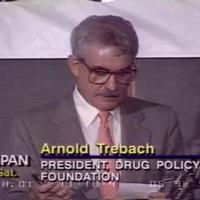The State of the Art: The Malcolms’ Examination of Straight, Incorporated, Part 2
- Marcus Chatfield
- Jul 7, 2016
- 3 min read
Updated: Aug 29, 2023
Editor’s Note: This is the second in a five-part series from Marcus Chatfield, a regular contributor to Points. Here he continues his examination of Straight, Inc., the controversial adolescent drug treatment program that existed from 1976 to 1993.
There is no way to account for the discrepancies or misconceptions reflected in the Malcolms’ report. It’s possible that they were ill-informed and the group was given special instructions to behave differently during their visit. They may have had some vested interest in writing a favorable report, but the simplest explanation might come from Dr. Malcolm himself.
In his book, The Case Against the Drugged Mind (1973), he argues that society is in decline because of drugs and alcohol and he acknowledges his lack of composure concerning our future:
I am one student of the subject who does not contemplate the future of the chemophilic society with the same degree of composure as many of my colleagues do. In fact, as the reader will soon note, I am quite unable to appreciate the general rejoicing that seems to attend the observation that we have at last become restrained and civilized about drugs (from the preface).
He seems to have considered all of Western Civilization to be a chemophilic society unraveling because of its illicit cravings, like a compulsive drug user, bent towards self-destruction:
The chemophilic society tends to do the same thing: it compulsively swallows, inserts sniffs and injects its miraculous drugs. Finally this pattern, exactly as in the case of the alcoholic tends to become inappropriate. The many alternatives to intoxication are simply ignored (p. 4).
Like an intervention with a self-harming family member, because the disease is progressive and terminal, our society will need to be rescued – before we can be certain about the cure – we will have to take some risks in order to save humanity:
It is apparent, moreover, that as a consequence of this our society is suffering from progressively more serious psychological and physical distress. We are, in fact very likely at a point in time at which some crucial decisions must be made. And some of these decisions will have to be made without the benefit of all the facts. Our sickness is real enough and we are not likely to recover from it spontaneously (p. 4).
The report doesn’t give any information about Barbara Malcolm, B.A., but considering Dr. Malcolm’s areas of expertise and his convictions, he might have been the perfect person to explain Straight’s methods in a favorable light. But knowing the uniform consistency across the Straight franchise throughout its operation (along with the fact that the Malcolms’ research was conducted during the infamous “Miller Newton years” at Saint Petersburg), it’s difficult to understand how their conclusion – “Straight simply does not engage in brainwashing” – could have been so conclusive and so completely contrary to other expert assessments.

In his book The Great Drug War (1987), Trebach devoted an entire chapter to Straight, detailing the story of Fred Collins: his bizarre abduction, the methods of “brainwashing” he witnessed, and his successful lawsuit against the program. While writing about Collins’ experience, Dr. Trebach sent a preliminary draft to Professor Beyerstein, Department of Psychology at Simon Fraser University. Beyerstein responded by comparing Straight’s techniques to those of the Chinese Communists that were used upon United Nations prisoners of war during the Korean War. “The parallels with Straight’s methods are striking,” Beyerstein said.
The Chinese used techniques that Straight seems to have lifted wholesale. It seemed to me as I read your account that someone at Straight had read the literature on brainwashing and systematically set out to apply it (Trebach, 1987, p. 43).
In 1990, Dr. Beyerstein and his colleague Dr. Bruce Alexander were able visit Straight’s Springfield, Virginia facility, observing their methods first-hand. Later that same year, Alexander summed up his observations of Straight in his book, Peaceful Measures: “I believe that Straight’s treatment can be fairly compared with ‘brainwashing’ in prisoner-of-war camps as documented by Brown (1963, chap. 2)” (p. 75). Then he mentions that Straight’s executives had provided him with the Malcolms’ report (along with the Friedman study) as proof that their methods were effective.
Beyerstein noted:
In effect, our hosts at Straight Inc. argued not that their means were so very different from what critics had alleged, but that their noble ends (saving the nation’s children!) justified such harsh and underhanded manipulations. They excused their tactics on the grounds that the dangers of drugs, especially for youth, are so overwhelming that practices normally forbidden in democracies must be permitted in the all-out battle for survival (p. 246).
In 1992, Dr. Beyerstein published a lengthy analysis comparing Straight’s methods to “brainwashing,” referring to the work of Dr. Robert Jay Lifton, Dr. Edgar Schein and cult expert, Dr. Susan Andersen. (The Malcolms referred to their own expertise and to Dr. Malcolm’s own personal criteria, found in The Tyranny of the Group, for their assessment.)
Check back next week for Part 3. Chatfield’s series will run every Thursday.
